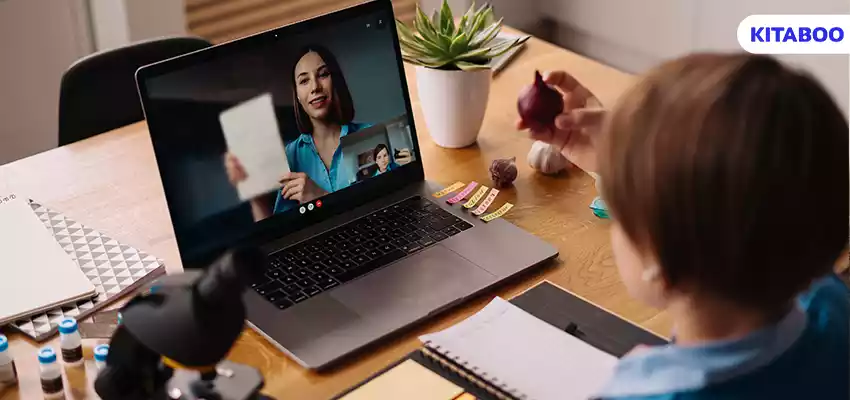
Video Learning Revolution: Optimize Your Training Content
Are you wondering what all the fuss is about in regard to visual learning? Its demand is increasing more than ever, prompting many trainers to switch from text-based education to visual learning.
A study shows that 55% of learners prefer classes with visual learning elements. Pondering how to create content that lets you stay ahead of the curve? Visibility is the key! In the midst of fierce competition, you need to optimize your content in order to stand out.
In this blog, you’ll learn everything about optimizing your video training content with ease.
Table of Contents:
I. Ways to Create Effective Video Content
- Putting the Audience First
- Focusing on Content Design Principles
- Storyboarding and Scripting
- Visual and Audio Elements
- Interactivity and Engagement
- Optimizing for Mobile Learning
II. Rounding Up
Ways to Create Effective Video Content
1. Putting the Audience First
The first and foremost step to creating effective video training content is to find your target audience. Who’s the content for, and what age group do they belong to? After deciding this, you have to ask yourself a few questions to better understand your target audience and optimize your content accordingly.
- How deep is their knowledge on the subject being taught?
- What answers are they looking for?
- What are the challenges they might undergo?
- What are some other related topics they should know about?
- What are the learning objectives from the course?
Considering these questions will help you tailor the right content for your desired audience. Taking cognisance of your audience’s cultural background will also help avoid misunderstandings. When you’re creating content for an international audience, refrain from using references that may not be universally understood.
2. Focusing on Content Design Principles
Content design principles are guidelines that can make video learning clear, engaging, and user-focused.
We’ve all seen educational videos on YouTube featuring professors working in prestigious institutions, yet some may have fewer views due to their use of complicated jargon. This is where clarity comes in and is one of the most important content design principles. Using simple language will already put you ahead of so many people out there. Be straightforward and avoid bluffing.
Next up is accuracy, the one factor that can create trust or make you seen as an unreliable source. Ensure the information you share is authentic and doesn’t stir up confusion. Information is always evolving, so make sure to update your content in a timely manner.
When you’re creating video content or any content at all, long sentences like this one, which runs on and on without pause, make the audience retain less information, so avoid them. Keep your delivery concise. That’s another principle: brevity.
I’ve already mentioned that using references for an international audience doesn’t always work because some may not understand them. This brings up another important principle: inclusivity. Make sure your content aligns with all races and age categories.
Create content that fits together perfectly like a jigsaw puzzle. It should seamlessly flow from one section to the next to avoid confusion. Talking about one topic and then abruptly jumping on to the next without a connection will confuse the audience. Maintaining cohesiveness is crucial in this case.
Ensure that your video content adheres to these principles, and you’re good to go. Remember that all principles are equally important, and missing one might affect your end result.
3. Storyboarding and Scripting
Take a paper and sketch out your video presentation. That’s your storyboard. It’s basically your end video in a pictorial form, depicting what the audience will see and hear in your video. How is this helpful, you may ask? It helps you identify any challenges beforehand that you can solve before the production process begins.
While creating a storyboard may seem unnecessary, it actually saves time. If something isn’t right, you can always use another piece of paper, but it takes more time to reshoot or edit a video.
Keep your target audience in mind as you create a script that resonates with them. Ask yourself a few questions to ensure your script meets their needs:
- Is this part necessary?
- How can I simplify this?
- Is this straightforward and simple?
- Do all the sections connect well?
Storyboarding and scripting will help you get a glimpse of the end result, allowing you to refine it. Making changes before filming begins helps everything move smoothly and ensures you end up with the perfect video.
4. Visual and Audio Elements
It’s a known fact that viewers retain 95% of information when presented in video format. With this in mind, many have ventured into visual learning. How can you compete? By infusing your video with visual and audio elements, you elevate it above mere monotony.
Video training content without animations is like any other video you might want to skip. Incorporating animations is essential to simplify concepts, helping learners visualize and understand better. Moreover, it adds visual appeal. Utilize graphs and charts to compare data and GIFs to enhance engagement.
Incorporating background and sound effects will elevate your video to the next level. Regardless of age category, everyone appreciates visual and audio elements, so don’t hesitate to incorporate them.
Some platforms, like KITABOO, a digital textbook platform, offer features to incorporate Augmented Reality (AR) and Virtual Reality (VR), maximizing learner engagement.
5. Interactivity and Engagement
You can have a top-notch video, but if it lacks interaction, it’s like talking to ourselves. Keep asking questions for learners to stay engaged, encouraging them to answer along with the video.
Adding quizzes at the end of each video boosts engagement and allows for performance evaluations. Incorporating gamification enhances enjoyment and aids in better information retention, benefiting learners overall.
Creating these interactive elements is made easy with KITABOO, also allowing creators to track the progress of each learner.
Tip: Incorporate polls to understand your audience’s opinions and gather feedback on their expectations. You can utilize this to ask which topics they’d like to hear from you.
6. Optimizing for Mobile Learning
We’ve likely encountered many websites that aren’t optimized for mobile phones, and it’s a missed opportunity if you don’t address this. While accessibility across all devices is important, optimizing content for each one is equally crucial. Prioritize optimization for mobile devices, as it is one of the most widely used devices.
Consider factors such as screen size and bandwidth limitations to ensure the audience has an exceptional experience.
Rounding Up
Your video learning content may be of high quality, but if it isn’t optimized, it will not yield the results you’d expect. All the factors mentioned above are important, and including them is all you need to stand out from the crowd.
Need help with optimizing your video training content? From creating engaging video training content to optimizing it for maximum impact, KITABOO offers a comprehensive suite of features, ensuring it stands out as the ultimate solution in the market.
Discover how a mobile-first training platform can help your organization.
Kitaboo is a cloud-based platform to create, deliver & track mobile-first interactive training content.






